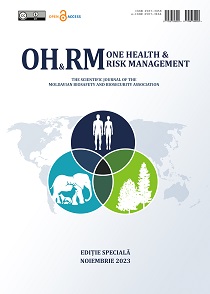Abstract
Introduction. Leptospirosis is caused by pathogenic bacteria known as leptospires, which can be transmitted directly or indirectly from animals to humans. This disease is found worldwide but is most prevalent in tropical and subtropical regions. Leptospirosis is a potentially serious but treatable condition. Its symptoms can resemble those of various unrelated infections, including influenza, meningitis, hepatitis, dengue, or other viral hemorrhagic fevers. The range of clinical symptoms is quite broad, varying from subclinical infections to severe multi-organ involvement with high mortality rates. Laboratory diagnostic tests are not always readily available, particularly in developing countries. Although numerous tests have been developed, the availability of appropriate laboratory support remains a challenge.
The aim of the study was to carry out a performance analysis of current laboratory diagnostic methods for leptospirosis.
Material and methods. We conducted a literature search using various published data sources and performed a PubMed search on the topic. This article delves into the different diagnostic options for leptospirosis. We assessed abstracts, and articles that met the predefined criteria for study selection were included. The initial selection was based on the titles and abstract contents. Further selection was contingent upon a detailed analysis of the original publications and the selection of those deemed relevant according to the criteria.
Results. A definite diagnosis of leptospirosis relies on either on isolating the organism from the patient, on seroconversion, or a rise in antibody titer. Direct observation of leptospires by darkfield microscopy is unreliable and not recommended. Isolation of leptospires can take up to months and does not contribute to early diagnosis. Diagnosis is usually performed by serology; enzyme-linked immunosorbent assay and the microscopic agglutination tests are the laboratory methods generally used; rapid tests are also available. The limitation of serology is that antibodies are lacking in the acute phase of the disease. In recent years, several real-time polymerase chain reaction assays have been described. The polymerase chain reaction (PCR) is a sensitive and specific technique which can detect the presence of DNA in the very early stage of the disease, so PCR together with IgM ELISA can be used to confirm the diagnosis early on in the acute stage of the infection. These can confirm the diagnosis in the early phase of the disease before antibody titers reach detectable levels, but molecular testing is not available in areas with restricted resources.
Conclusions. While a range of conventional techniques have been developed for diagnosing leptospirosis, addressing key challenges related to sensitivity, reproducibility, and the ease of miniaturization before their successful translation remains crucial. Leptospira is one of the organisms for which an immediate diagnostic assay is needed, as the existing gold standards for the disease have been proven to be imperfect.
|
 Views: 77|
|
Views: 77|
|
This work is licensed under a Creative Commons Attribution 4.0 International License.

